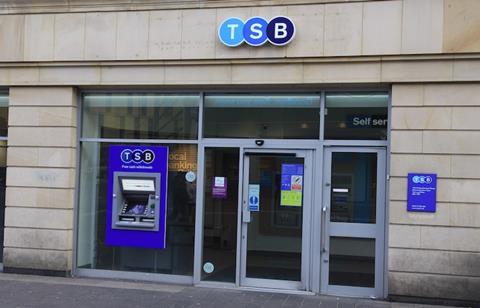
Banking organisation TSB has reported a 31% mean gender pay gap for fixed hourly pay as at April 2018; this is unchanged from April 2017.
The organisation, which currently employs more than 8,000 staff, reported its gender pay gap data in line with the government’s gender pay gap reporting regulations and in time for the private sector submission deadline of 4 April 2019.
The reporting regulations require organisations with 250 or more employees to publish the differences in mean and median hourly rates of pay for male and female full-time employees, the gap in men and women’s mean and median bonus pay, the proportions of male and female employees awarded bonus pay, and the proportions of male and female full-time employees in the lower, lower middle, upper middle and upper quartile pay bands.
TSB’s median gender pay gap for fixed hourly pay is 23%, as at April 2018; this reflects a 1% reduction from the 24% median gender pay gap it reported in 2017.
Its mean gender pay gap for bonuses paid during the reporting period is 46%; this is a 7% improvement on last year’s figure of 53%. The median gender pay gap for bonus payments is 34%, compared to 37% in 2017. Over the current reporting period, 93% of female employees and 90% of male employees received bonus payments. This is an increase of 5% and 6% respectively since 2017.
Less than half (47%) of employees in the highest pay quartile at TSB are female, compared to 66% in the second quartile, 77% in the third quartile and 76% in the lowest pay quartile.
TSB attributes its gender pay gap to having more women than men employed in non-senior management roles, which comprise 68% female staff versus 32% male employees. With an equal gender split, TSB calculates that its mean gender pay gap would reduce by 22 percentage points to be 9%.
Helen Rose, chief operating officer and executive sponsor for gender at TSB, said: “Although our median gender pay gap has only seen a small improvement, it’s a step in the right direction. Furthermore, the actions we’ve taken in the past year, including a number of senior female appointments, demonstrates our long-term commitment.
“The solutions are going to be different for every organisation. That’s why we’re committed to really explaining our numbers and clearly setting out the steps we are taking to address our gap. Because it is only by being transparent and sharing information that we can drive change and help all UK businesses work towards making the gender pay gap a thing of the past.”
To address its gender pay gap, TSB partnered with professional network Women Returners, running its own pilot return-to-work programme. For 2019, this will be supported by the Returners Financial Services Scotland Programme, a scheme starting in Edinburgh in September.
TSB reports that it has also worked to improve the gender balance of shortlisted candidates when recruiting for new roles, and that it continues to challenge external recruitment agencies on this too.
The organisation is further championing female partners by using its rising stars talent programme, improving its Partners for Partners buddy scheme, which encourages individuals to return to TSB after a career break, and offering flexible work policies to partners; this includes providing a new digital workplace, where partners can remotely access all the systems they need.
TSB has also committed to regularly engage with policy makers and other organisations, in order to better understand how to tackle gender imbalance and share best practice.
Rose added: “There are no quick fixes and there’s a lot more to be done, but we are making progress. A great example of this is our new [small and medium-sized enterprise (SME)] banking leadership team, which we announced in September 2018.
“We set out to build the team to reflect the businesses and communities we serve, and we’re proud that of the 11-strong leadership team, eight roles are held by women. And our first 16 SME field relationship managers, based in the local community, are made up of six women to 10 men. But it’s not just gender we’re balancing; 20% of the team are from [black, Asian and minority ethnic (Bame)] backgrounds, making us one of the most diverse SME banking teams in the UK.
“Our focus is on embedding the values of inclusion and diversity throughout the organisation to bring about change.”











